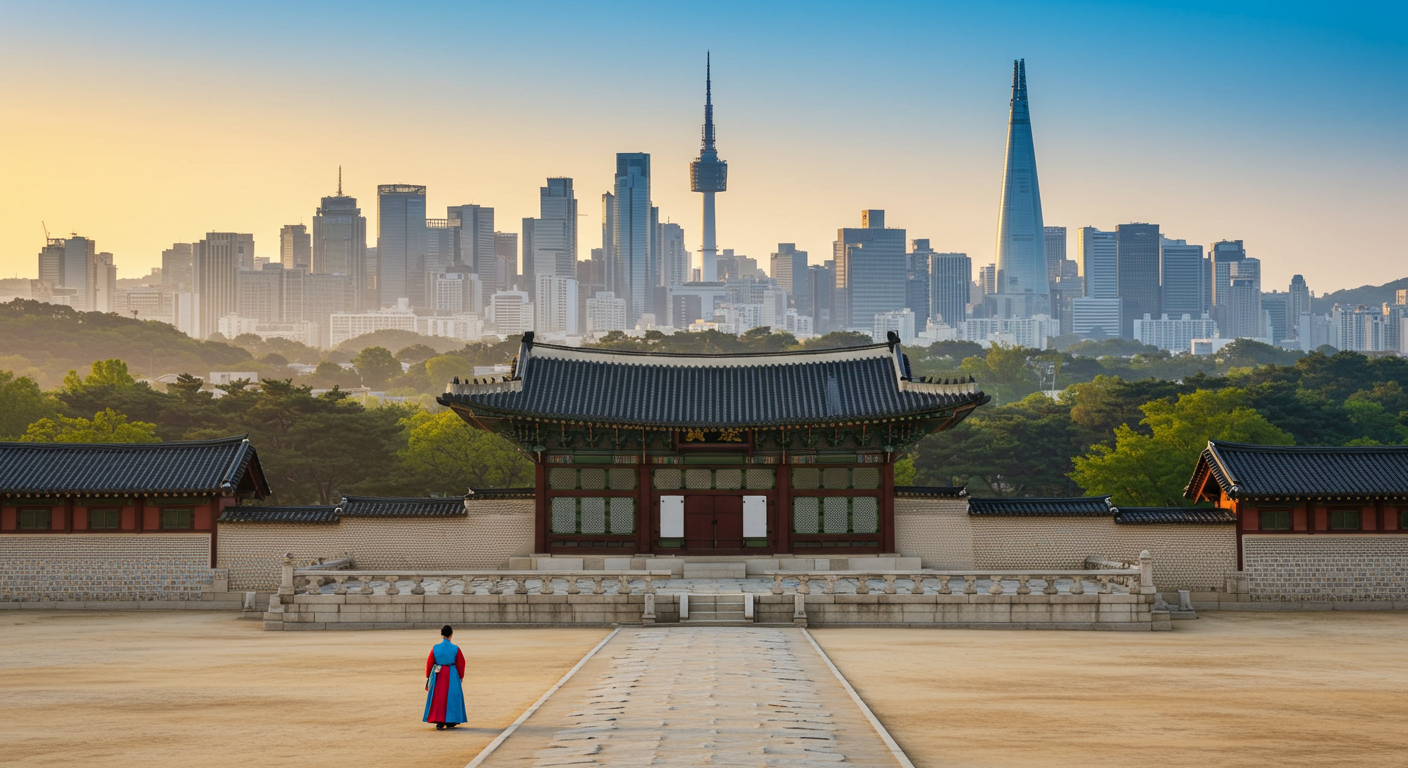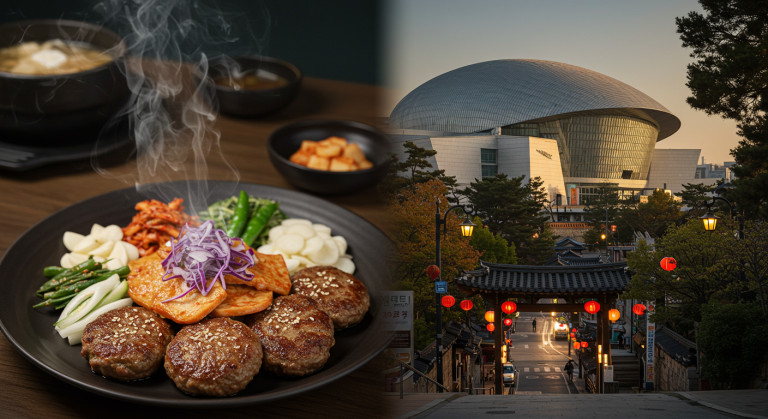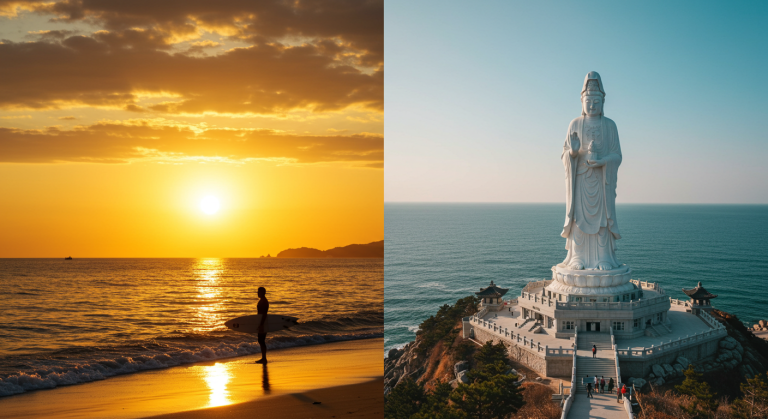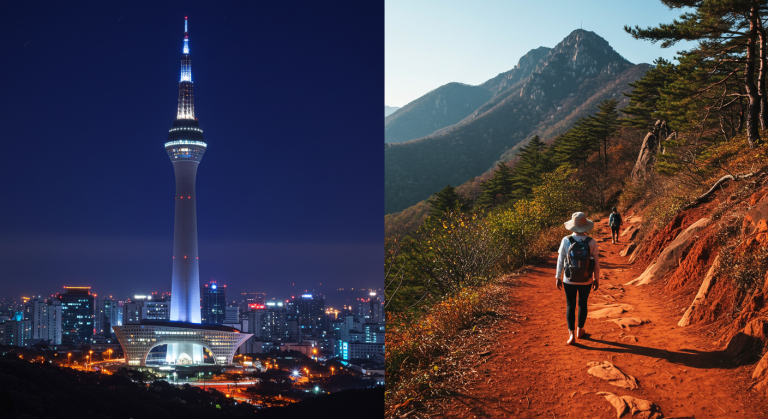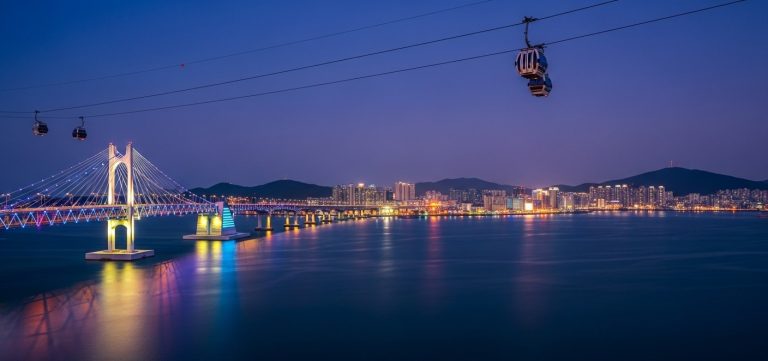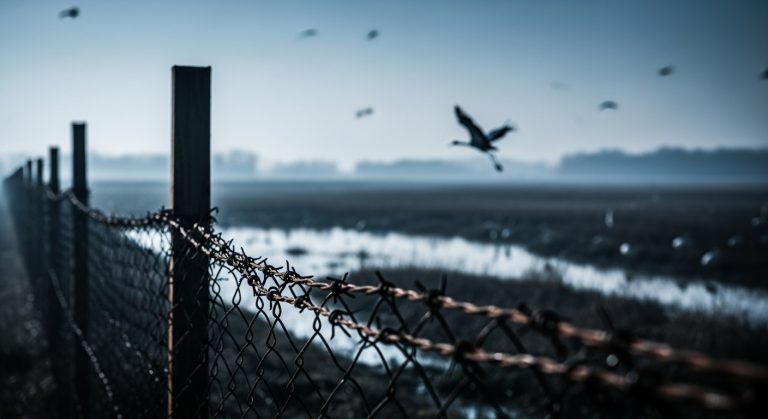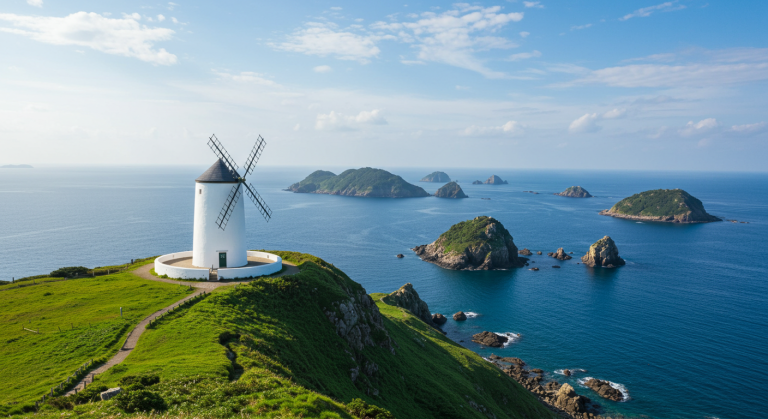Mastering Yongin: A Detailed Itinerary for Culture, Thrills, and K-Drama Sets

I remember the first time I tried to plan a trip to Yongin, South Korea, and it felt like trying to mix oil and water.
How do you seamlessly transition from the adrenaline-pumping 77-degree drop of the T-Express to the quiet, dignified traditions of a Joseon-era village?
It seemed impossible, but trust me, Yongin is a city built on beautiful paradoxes.
Located just south of Seoul in Gyeonggi Province, it’s not just a stopover; it’s a destination that perfectly caters to every kind of traveler, offering culture, pure fun, and cinematic history in equal measure. This guide is your complete, step-by-step master plan to conquering Yongin like a seasoned travel pro. ✨
Section 1: The Cultural Cornerstone: Korean Folk Village (한국민속촌) 🏰
Let’s start where Korea’s heart truly beats: the Korean Folk Village (KFV).
This isn’t just a collection of old buildings; it’s a massive, sprawling, living history exhibit that recreates the traditional lifestyle of the Joseon Dynasty.
Wandering through its gates is like setting your watch back 200 years.
I absolutely adore the realism—you see rice paddies, traditional schools (*Seodang*), farmhouses, and even the intense contrast between the humble commoner homes and the elaborate, tiled roofs of the noblemen’s estates (*Yangban*). It’s an architectural and social history lesson rolled into one beautiful afternoon. I promise you’ll be enchanted!
1.1. Deep Dive into Joseon Life: Architecture and Artisanry
- ✅ Traditional Houses (*Hanok*): Notice the difference in roof styles—thatched roofs (*Choga*) for commoners versus tiled roofs (*Giwa*) for the wealthy. This distinction tells a powerful story about social hierarchy.
- ✅ The Marketplace (*Jangteo*): This is where you grab lunch! You can sit on a wooden bench and feast on traditional fare like *Pajeon* (savory pancake) and *Dongdongju* (traditional rice wine), making the experience incredibly authentic.
- ✅ Artisan Workshops: Don’t just walk past them! Watch the blacksmith, the wooden mask carver, and the straw weaver work their magic. These are genuine skills being preserved right before your eyes.
The village is famous for its Immersive Character Actors. These aren’t just staff; they play specific roles (like a prisoner, a police chief, or a fortune teller) and they *stay* in character.
Engaging with them is hilarious and often leads to unique photo opportunities. Look for the colorful costumes and theatrical behavior—they are the soul of the village!
Section 2: The Adrenaline Anchor: Everland Resort & Caribbean Bay 🎢
From quiet tradition, we leap into absolute chaos—the wonderful chaos of Everland!
This is South Korea’s answer to Disney World, but with a unique, local flavor and arguably more terrifying rollercoasters.
Everland is enormous, divided into five distinct themed zones (Global Fair, American Adventure, Magic Land, European Adventure, and Zootopia).
Trying to do it all in one day is a fool’s errand, so strategic planning is an absolute necessity here. Let’s break down the must-do list.
2.1. The Thrill Hunter’s Checklist: Mastering T-Express
The T-Express isn’t just a ride; it’s a rite of passage.
As the world’s steepest wooden roller coaster (a staggering 77-degree drop!), the sheer speed and the wonderful rattling sound of the wooden structure make it an unforgettable experience. My stomach still drops just thinking about it!
T-Express Key Stats
- Drop Angle: 77 Degrees (Insane!)
- Top Speed: 104 km/h (65 mph)
- Construction: All wood (creates the signature, shaky thrill)
- Best Time to Ride: First thing in the morning or during the evening closing hour.
2.2. The Cutest Inhabitants: Panda World
A massive draw to Everland is the chance to see the Giant Pandas, especially the beloved Fubao (Fu Bao) and her family.
The Panda World is a calm, well-designed exhibit that offers a wonderful break from the intensity of the rides, and it’s a non-negotiable visit for any animal lover. Seeing them munch on bamboo is honestly meditative. 🐼
2.3. Summer Essential: Caribbean Bay
Right next to Everland is Caribbean Bay, one of the world’s largest indoor/outdoor water parks.
If your trip falls between May and September, dedicating a separate day (or combining it with a late afternoon at Everland) is highly recommended. It boasts massive wave pools and exhilarating water slides like the Mega Storm, offering a refreshing way to beat the Korean summer heat!
On Saturdays and Sundays, the queue times for the T-Express and Safari World can easily exceed 2-3 hours.
If you must visit on a weekend, your priority must be using the Everland Smart Queue System via their mobile app (download it before you arrive!). Reservations open at park opening and disappear fast—treat it like a race!
Section 3: Cinematic and Artistic Retreats (The Hidden Gems) 🖼️
Yongin’s appeal extends far beyond its two big attractions.
For those who love art, nature, and the history of Korean cinema, these spots provide the perfect dose of calm and creative inspiration.
3.1. Hoam Art Museum & Hee Won Garden
Nestled near Everland, the Hoam Art Museum houses a superb collection of traditional Korean art, ceramics, and Buddhist relics.
However, the star of the show for me is the adjacent Hee Won Traditional Garden. It is one of the most beautifully maintained private Korean gardens in the country, designed to reflect the classic aesthetics of Korean nature and architecture.
Case Box: Why Visit Hee Won Garden?
It’s not just manicured nature; it’s a living gallery of Pond Design, Pavilion Placement, and Stone Artwork.
The tranquility is unmatched, providing a genuine sense of the Joseon-era noble aesthetic that simply cannot be found in the bustling city centers. It is the perfect place for quiet contemplation and stunning landscape photography.
3.2. Yongin Daejanggeum Park (MBC Drama Set)
For K-Drama enthusiasts, this is Mecca.
Formerly known as MBC Dramia, this is the largest outdoor historical drama filming location in Korea. Massive hits like ‘Jumong,’ ‘Dong Yi,’ and the recent ‘Kingdom’ were all filmed on these sprawling sets.
You can literally walk through replicated royal palaces, military camps, commoner streets, and traditional prisons.
It’s an incredibly cool experience to recognize a set from your favorite show and recreate a dramatic scene. The scale of this park is truly monumental!
3.3. Wawjeongsa Temple: The Giant Buddha
As mentioned, Wawjeongsa Temple is easily identifiable by its massive, striking golden Buddha head.
It’s a spiritual place built by Buddhist monk Kim Haegeun to pray for national reunification, making it a site of deep significance. The surrounding areas contain various international Buddhist relics.
Section 4: Essential Planning and Logistics (Transportation & Stay) 🚇
Yongin is sprawling, and while it’s close to Seoul, getting around requires a clear plan.
Nothing ruins a trip faster than getting lost or wasting an hour waiting for the wrong bus!
4.1. Mastering the Seoul-Yongin Transit
| Destination | Recommended Transit | Approx. Time from Seoul (Gangnam) |
|---|---|---|
| Everland Resort | Subway (Bundang Line to Giheung) + EverLine Light Rail + Shuttle Bus | 1 hr 30 min |
| Korean Folk Village | Seoul Express Bus 5001/5003 (from Gangnam/Jamsil) *Easiest* | 1 hr 0 min |
| Daejanggeum Park | Subway (Gyeonggang Line to Gwangju Station) + Taxi/Local Bus | 1 hr 45 min |
4.2. Accommodation Strategy
For multi-day travelers, I suggest booking accommodation near the Giheung Station or Jiseok Station areas.
These areas offer decent business hotels and are strategically located near the EverLine, making early access to the parks easier. Staying near the Korean Folk Village is generally less convenient for overall Yongin sightseeing.
🛠️ Enhanced Interactive Tool: Multi-Attraction Time Planner
Calculate the estimated time needed and recommended arrival time for a two-attraction day.
Section 5: The Yongin Culinary Scene: Beyond Theme Park Food 🍜
Let’s be honest: theme park food is convenient, but it rarely captures the soul of a city.
Yongin has some surprisingly rich and specific culinary traditions that you absolutely must explore if you consider yourself a food traveler.
5.1. Focus on Regional Delicacies
- 🍚 Sannae Deulbap (Mountain Greens Rice): Given Yongin’s proximity to nature, many restaurants specialize in healthy, traditional set menus featuring mountain vegetables and freshly cooked rice. It’s comforting and deeply authentic.
- 🥩 Galbi (Ribs) near Suwon/Yongin border: The Suwon/Yongin area is renowned for its high-quality *Galbi*. Seek out a dedicated grill restaurant for a truly special meal—it’s worth the short bus ride!
- 🍲 Traditional Jangteo Food: At the Korean Folk Village’s marketplace, try the *Bindae-tteok* (mung bean pancake) and *Makgeolli* (cloudy rice wine). It’s an irreplaceable cultural dining experience.
For the best non-touristy food, skip the main entrances of Everland and KFV. Instead, search for highly-rated restaurants near the Giheung Station or Sangsang-dong districts. These areas serve a local crowd and offer better value and quality.
Visual Summary: Your Essential Yongin Checkpoints (A 2-Day Plan) 🗓️
Final Thoughts: Your Yongin Adventure Awaits! 🚀
I’m genuinely excited for you to experience Yongin.
It’s a place that effortlessly bridges the gap between ancient Korean history and modern, world-class entertainment, and it’s a destination often overlooked by travelers who only stick to the central districts of Seoul.
By using this guide, you now have the tools—from transport tips to dining secrets—to navigate the city like an expert.
Whether you’re cheering on the tightrope walker or screaming through the forest on a wooden coaster, Yongin promises a trip full of diverse, wonderful memories. Happy travels! 💖
*Disclaimer: All prices and hours are estimates and subject to change. Always check the official attraction websites before planning your journey. The budget estimator is for planning purposes only and does not include shopping or personal expenses.*
